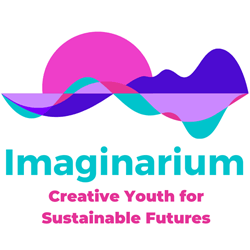- Activity
Description :
In a fast changing world we observe a number of “future scenarios” offered by media, social media, influencers and people with authority. Young people (and we as youth professionals as well) might wonder which one is true, which one is fake? and can we influence the future scenarios at all? This activity allows young people to take a moment to reflect on their own images of desired futures, beyond the visions (far often too dramatic) circulating around us.
Methodology :
- Ask the participants to take a moment of reflection, individually. They might close their eyes and imagine how their world will look in 10 years. You might inspire them with a question: how we will live, what will the city look like? What will mobility be like, where will we work, at what days and time? How will the school be and what will be the free time activities? Will all of that be online or we will get back to face-to-face activities? What will be our entertainment? How will we learn and from/with whom?
- You can go on with your questions, or you can also use the example of the storytelling (Annex 1).
- Distribute the A4 paper and colorful pencils. Ask the participants to use the next 5 min to draw the picture of the reality as they wish it will be. In case they feel more comfortable writing down the ideas rather than drawing, they can do it with words. However, try to encourage them to make at least little sketches. Visual thinking changes the way we dream!
- After 5 min invite the participants to share their visions in pairs for the next 10 min.
- When 10 min is over, invite the whole group back to the plenary and let some of them share their examples. You might take notes of the key-words on the whiteboard, e.g. sustainable, equal, tech, green, digital, just etc. Those keywords will help you to summarize what similarities were mentioned.
Debriefing
- Was it easy / difficult to come up with the vision?
- Was your vision similar/different with the vision of your colleague?
- What point surprised you the most when listening about the vision of the other person?






